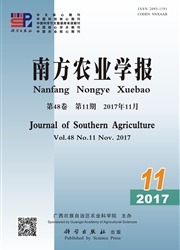

 中文摘要:
中文摘要:
【目的】在集体林权制度改革的众多利益主体中确定主要利益相关者,为深入剖析改革中的利益配比关系和研究此类相关问题提供参考借鉴。【方法】采用美国著名学者米切尔的三要素评分法,从合法性、权力性、紧急性3个属性入手对集体林权制度改革中主要利益相关者进行探讨分析。【结果】集体林权制度改革中的主要利益相关者为集体林的经营者、政策的制定者、普通农户及村集体,在主要利益相关者之间,不同利益需求使他们各自在参与集体林权制度改革的过程中表现出显著的利益竞争或冲突,同时又有利益需求的一致性。【结论】主要利益相关者对集体林权制度改革的发展进程产生重要影响,他们之间的利益冲突会因改革的推进而不断变化,同时利益需求也会随之产生波动,促使三者间的利益需求达到均衡才是集体林权制度改革成功的关键所在。
 英文摘要:
英文摘要:
[Objective ]In this essay, the main stakeholders were measured from a pool of profit subjects in the collective forest rights system in order to provide references for further analyzing the corresponding profit ratios relationship in this reformation and for studying related problems. [Method ]This paper adopted the famous American scholar Mitchell s three factors evaluation method, which processed the influence level of each group of stakeholders by measuring the group's importance level in each of the following categories: legality, power, and urgency. [ Result ]Through analysis, the main stakeholders in the collective forest rights system included the collective forest right operators, the policy makers, and farmers with collective village personals. Because of different demands in interests, these stakeholders presented sig- nificant conflict of interest during the reformation of the collective forest rights system. [ Conclusion ] Different opinions amongst different stakeholder groups can make tremendous amounts of impact on the reformation of the collective forest rights system. Interest conflicts and interest demands between different stakeholders constantly changed as the reform development progressed. The key to success in the reformation of the collective forest rights system require balance consistency and conflict resolution for these main stakeholders.
 同期刊论文项目
同期刊论文项目
 同项目期刊论文
同项目期刊论文
 期刊信息
期刊信息
